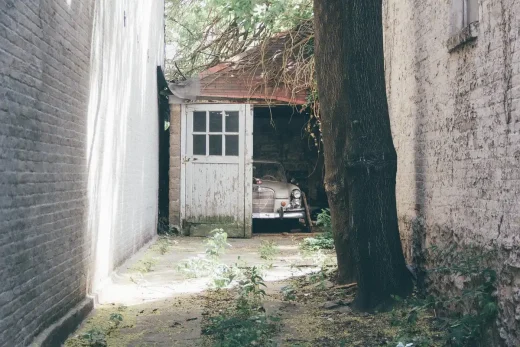Affordable rental housing guide, Role of architecture advice, Edinburgh property
Affordable Rental Housing: Role of Architecture
14 February 2025
The Role of Architecture in Creating Affordable Rental Housing
In an era where the cost of living continues to rise and housing shortages persist, architecture plays a critical role in shaping solutions for affordable rental housing. Innovative design strategies, new construction technologies, and sustainable development practices are helping to address the growing demand for cost-effective and accessible living spaces. This article explores how architecture can be leveraged to create affordable rental housing in Edinburgh without compromising quality or liveability.
1. Smart Design for Cost Efficiency
One of the primary ways architects contribute to affordable housing is through cost-effective design. Optimizing space usage, incorporating multi-functional areas, and designing compact yet comfortable living environments can reduce construction and rental costs. Open floor plans, built-in furniture, and flexible room layouts allow for better utilization of limited space while maintaining a high standard of living.
Another strategy involves using cost-effective materials that do not compromise structural integrity. High-quality, low-cost materials such as cross-laminated timber (CLT) and insulated concrete forms (ICFs) have gained traction in the affordable housing sector. Additionally, adopting passive solar design principles—where buildings are oriented to maximize natural light and heat—reduces energy consumption and utility costs over time.
2. Modular and Prefabricated Housing
Modular and prefabricated construction methods have revolutionized the housing industry, making affordable rental housing more viable. These techniques allow for mass production of housing components in a controlled factory environment, reducing material waste and labour costs. Prefabricated housing is also quicker to assemble on-site, which can significantly lower overall development expenses. Countries like the UK are increasingly adopting these methods to meet housing demands, particularly in urban areas like London and Edinburgh.
Furthermore, modular homes can be designed with scalability in mind. Entire neighbourhoods of affordable housing units can be developed rapidly, meeting the demand for rental properties more efficiently. Some modular housing projects also integrate smart technology, allowing tenants to monitor and reduce their energy consumption, further lowering living costs.
3. Sustainable and Energy-Efficient Solutions
Sustainability plays a crucial role in affordable housing, as energy-efficient buildings can lower long-term living costs for tenants. Incorporating passive design principles, such as natural ventilation, strategic window placement, and thermal insulation, can reduce the need for artificial heating and cooling. Additionally, the use of renewable energy sources, such as solar panels and rainwater harvesting systems, helps to create more self-sufficient housing units.
Another important aspect of sustainable affordable housing is the use of locally sourced, recycled, or upcycled materials. For instance, recycled steel and reclaimed wood can significantly reduce both the environmental impact and construction costs. Green roofs and vertical gardens also contribute to energy efficiency while enhancing urban biodiversity.
4. Adaptive Reuse of Existing Structures
Instead of constructing new buildings from scratch, repurposing existing structures can be a cost-effective approach to providing affordable rental housing. Abandoned warehouses, office buildings, and historical structures can be transformed into residential spaces through adaptive reuse. This strategy not only reduces demolition waste but also preserves the architectural heritage of cities like Edinburgh, where historic buildings are abundant.
Adaptive reuse also has the advantage of reducing urban sprawl. By converting underutilized commercial spaces into housing, cities can meet rental demand without excessive expansion into green spaces. Successful examples of adaptive reuse include old school buildings converted into affordable apartments and former industrial complexes redesigned as co-living spaces with shared amenities.
5. Mixed-Use Developments and Community-Centric Design
Integrating affordable housing within mixed-use developments can create more inclusive urban environments. By combining residential units with commercial spaces, co-working hubs, and public amenities, developers can maximize land use while fostering a sense of community. Well-designed public spaces, such as parks and communal gardens, also enhance the quality of life for tenants without increasing rental costs.
Mixed-use developments can also support economic sustainability. When residents live close to workplaces, schools, and services, transportation costs decrease, making urban life more affordable. Moreover, community-based design—where shared spaces like kitchens, laundry rooms, and recreational areas are incorporated—fosters social interaction and reduces construction costs per unit.
6. Government and Policy Support
Architectural solutions alone are not enough to solve the affordable housing crisis—government support and policy initiatives play a vital role. Zoning laws, tax incentives for developers, and subsidies for low-income renters can encourage the construction of affordable housing projects. In the UK, initiatives like the Affordable Homes Programme and Build-to-Rent schemes have helped drive investment in cost-effective rental properties.
Policies that prioritize affordable housing within new developments can also make a difference. Inclusionary zoning laws, which require a portion of new residential developments to be allocated for affordable housing, have been successfully implemented in cities like London. Additionally, rent control measures and housing co-operatives help protect tenants from rising rental costs.
Conclusion
Architecture is a powerful tool in addressing the global housing crisis, particularly when it comes to creating affordable rental housing. Through innovative design, modular construction, sustainable practices, and adaptive reuse, architects and developers can provide high-quality yet cost-effective living solutions. By integrating these principles with supportive policies, cities like Edinburgh and London can offer more accessible rental options without compromising on urban development and architectural integrity.
Ultimately, a multi-faceted approach combining smart architectural strategies, cutting-edge technology, and robust policy frameworks is essential in shaping a more affordable and inclusive housing landscape.
Comments for this guide to Affordable rental housing guide: Edinburgh property article are welcome.
Scottish Capital Property Development
New Homes in the Scottish Capital
Artisan Real Estate Developments
Artisan Real Estate Sustainable Homes
Edinburgh Property Developments
Architecture Developments in the Central Belt
Springside Quarter Fountainbridge
Comments / photos for Affordable rental housing guide: Edinburgh property page are welcome.







